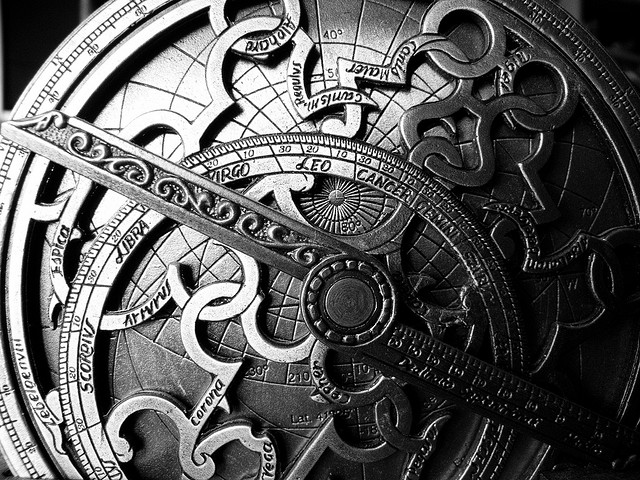Post by Wes Gear on Aug 25, 2011 1:00:58 GMT 10
Astrolabe– Magnificent Computer of the Ancients
It is an ancient tool, created over two thousand years ago when people thought that the Earth was the center of the universe. They are often referred to as the first computer and however debatable that statement might be there is one thing for sure without a doubt. Astrolabes are objects of immense mystery and beauty.

So what does an astrolabe do and how were they useful in the ancient world? Firstly they are problem solving instruments – they compute things such as the time of day according the position of the sun and the stars in the sky. Like a computer, you input information and then you receive output. They were typically made of brass and had a 6 inch diameter, although as we will see much larger ones were made.
The sky is drawn on the face of the astrolabe, focusing on the twenty brightest stars. One of the first questions about astrolabes is that if the ancients believed the universe to be earth centered then how did they work as obviously the solar system is helio-centered? Yet the ancients knew the relative sizes of the earth and the sun and the distances between them. Based on what we can see with the eye there is no difference between a helio-centered solar system and one which is believed to be earth centered – at least in terms of the math involved.
Moveable components on the astrolabe are then set to a specific time and date and then the sky is represented on the face of the instrument. What was the point of that? A lot of astronomical problems, some as simple as finding the time of day or night, could be solved with the astrolabe. The ancients were also able to find out what time the sun would rise and set from the astrolabe. You can also work out directions: the astrolabe was invaluable to Muslim scholars as from it they could work out the direction to Mecca.

To describe exactly how an astrolabe works would be pointless – show and tell is a much better way of doing things. Here, in a TED podcast, Tom Wujec reaches back in time to the astrolabe. With thousands of uses, from telling time to mapping the night sky, this old tech reminds us that the ancient can be as brilliant as the brand-new.
Read more: www.kuriositas.com/2011/04/astrolabe-magnificent-computer-of.html
It is an ancient tool, created over two thousand years ago when people thought that the Earth was the center of the universe. They are often referred to as the first computer and however debatable that statement might be there is one thing for sure without a doubt. Astrolabes are objects of immense mystery and beauty.

So what does an astrolabe do and how were they useful in the ancient world? Firstly they are problem solving instruments – they compute things such as the time of day according the position of the sun and the stars in the sky. Like a computer, you input information and then you receive output. They were typically made of brass and had a 6 inch diameter, although as we will see much larger ones were made.
The sky is drawn on the face of the astrolabe, focusing on the twenty brightest stars. One of the first questions about astrolabes is that if the ancients believed the universe to be earth centered then how did they work as obviously the solar system is helio-centered? Yet the ancients knew the relative sizes of the earth and the sun and the distances between them. Based on what we can see with the eye there is no difference between a helio-centered solar system and one which is believed to be earth centered – at least in terms of the math involved.
Moveable components on the astrolabe are then set to a specific time and date and then the sky is represented on the face of the instrument. What was the point of that? A lot of astronomical problems, some as simple as finding the time of day or night, could be solved with the astrolabe. The ancients were also able to find out what time the sun would rise and set from the astrolabe. You can also work out directions: the astrolabe was invaluable to Muslim scholars as from it they could work out the direction to Mecca.

To describe exactly how an astrolabe works would be pointless – show and tell is a much better way of doing things. Here, in a TED podcast, Tom Wujec reaches back in time to the astrolabe. With thousands of uses, from telling time to mapping the night sky, this old tech reminds us that the ancient can be as brilliant as the brand-new.
Read more: www.kuriositas.com/2011/04/astrolabe-magnificent-computer-of.html











 Happy New Years Everybody!!!
Happy New Years Everybody!!!